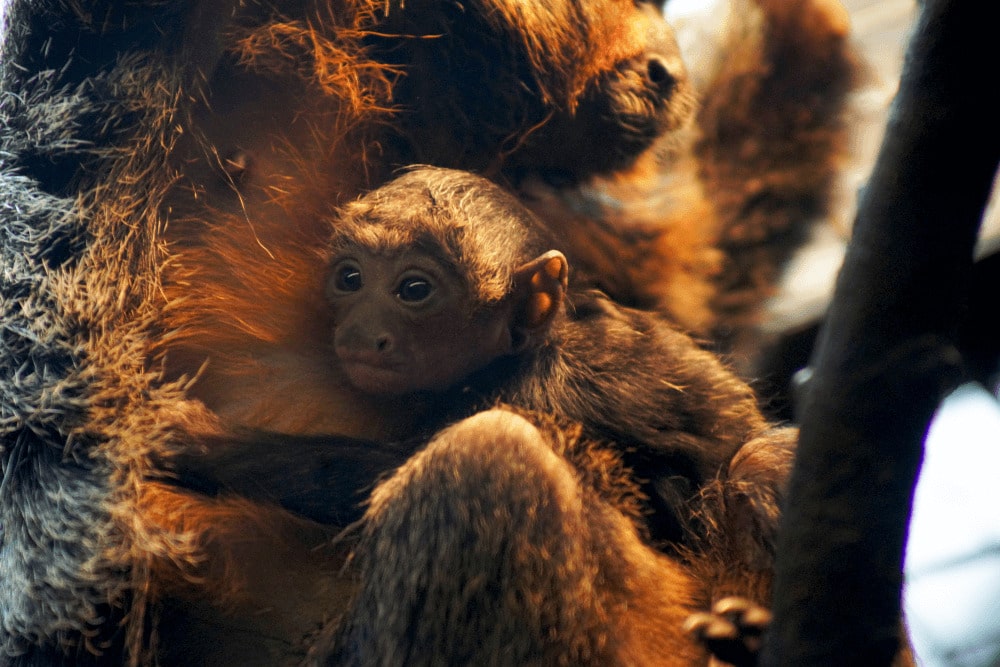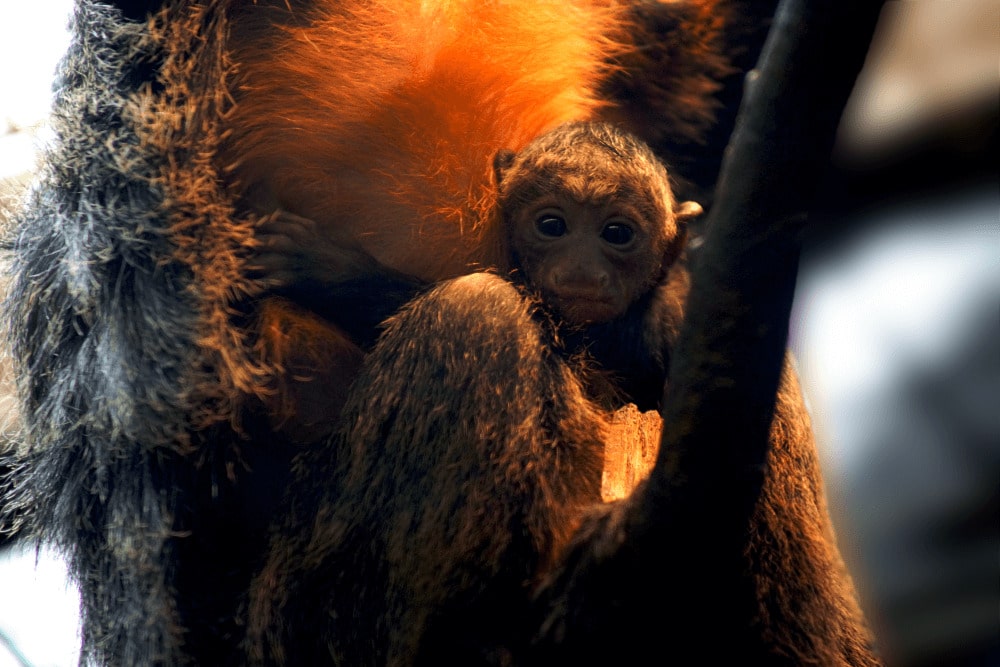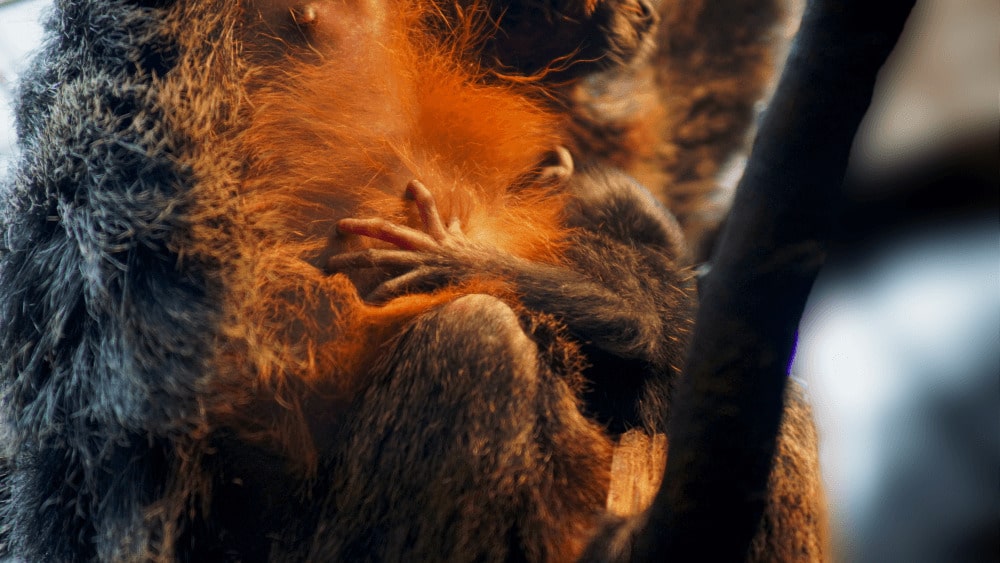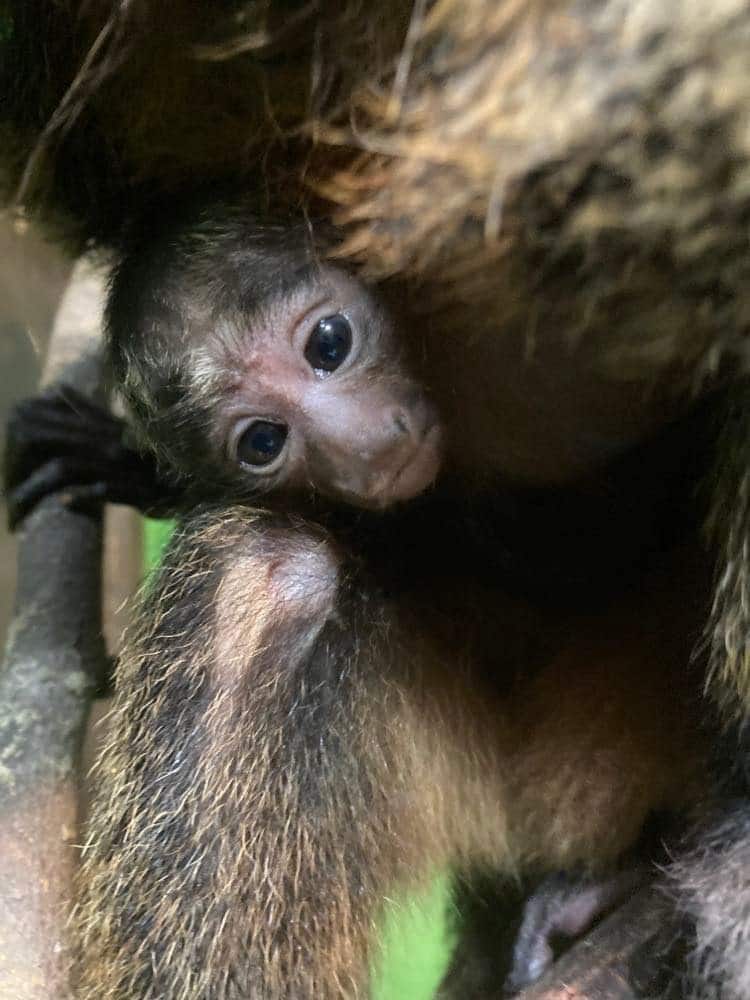A Saki Surprise!
January 16, 2023
January 16, 2023

What better way to beat Blue Monday than a gorgeous new arrival, guaranteed to turn those frowns upside down!
Meet our adorable white-faced saki monkey baby who took keepers by surprise, arriving on Boxing Day to parents Manja and Twenke.
White-faced sakis are native to Venezuela, Suriname, Guyana, French Guiana, and Brazil, where they live in a variety of forest habitats.
They are currently listed as being of Least Concern on the International Union for Conservation of Nature’s Red List of Threatened species and the animals at Marwell are part of an international breeding programme.
Although they’re listed as Least Concern, their numbers in the wild are decreasing and as a result, white-faced saki are protected in national parks in Brazil, Guyana and Suriname.
The new baby will live with their parents and older sibling, Rei, alongside our golden lion tamarins in the Life Amongst the Trees section of the park.
Manja and Twenke have had four babies since they were first housed together in 2016. Two of their older offspring, Denny and Diega have since moved to other collections.

Animal Team Leader, Amy Denny, said: “Baby will stay tucked into mum’s thigh for a few more weeks then will start moving up onto mum’s back to be carried.
“After this they will start leaving mum occasionally for short periods of time and siblings may help by taking turns carrying the baby.
“It is really important for siblings to experience an infant birth in the family group as this is how they learn to care for their own youngsters.
“Manja is a very experienced mum who does an excellent job raising infants. Twenke will start to get a little more involved as the baby becomes more independent and will share food etc.
“They will also learn play behaviour by trying this out on their siblings, although now Rei is 4 he might not be too impressed with being used as a climbing frame or wrestling partner!”
Did you know?
Baby sakis blend in very well with their mothers when they are being carried so guests might need to be patient when looking for our new arrival – we promise it’s worth the wait!

